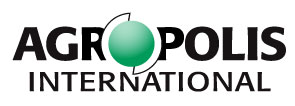Adapting APSIM to model the physiology and genetics of complex adaptive traits in field crops (ATTENTION! Lieu : Amphithéâtre Jacques Alliot, CIRAD)
Résumé
Achievements in crop improvement generally, and in molecular approaches to plant breeding particularly, are limited by the ability to predict plant phenotype based on its genotype, especially for complex adaptive traits. However, the capacity of crop growth and development models to bridge this predictability gap is questionable if the models rely on algorithms that describe key aspects of crop growth and development too simply, or if they delve too far into detailed process specification requiring extensive and sophisticated parameterisation. Here we outline a generic cereal crop growth and development model designed to exhibit reliable predictive skill at crop level while also introducing sufficient physiological rigour for complex phenotypic responses to become emergent properties of the model dynamics, thus facilitating effective gene-to-phenotype links. This new generic template has been programmed within the APSIM software platform, which enhances capacity for on-going and collaborative development. We detail experiments on diverse genotypes differing in height that underpin development and testing of the new sorghum crop model in the APSIM platform. The approach is focussed around quantifying capture and use of radiation, water, and nitrogen within a framework that predicts the dynamics of crop development and the realised growth of major organs based on their potential growth and whether the supply of carbohydrate and nitrogen can satisfy this potential. Genotypes differing in height were found to differ in both radiation use efficiency and biomass partitioning among organs. We demonstrate how introducing these effects of genetic variation associated with plant height into the model can generate emergent simulated phenotypic differences in green leaf area retention during grain filling via effects associated with nitrogen dynamics. The relevance to plant breeding of this capability in complex trait dissection and simulation is discussed.






